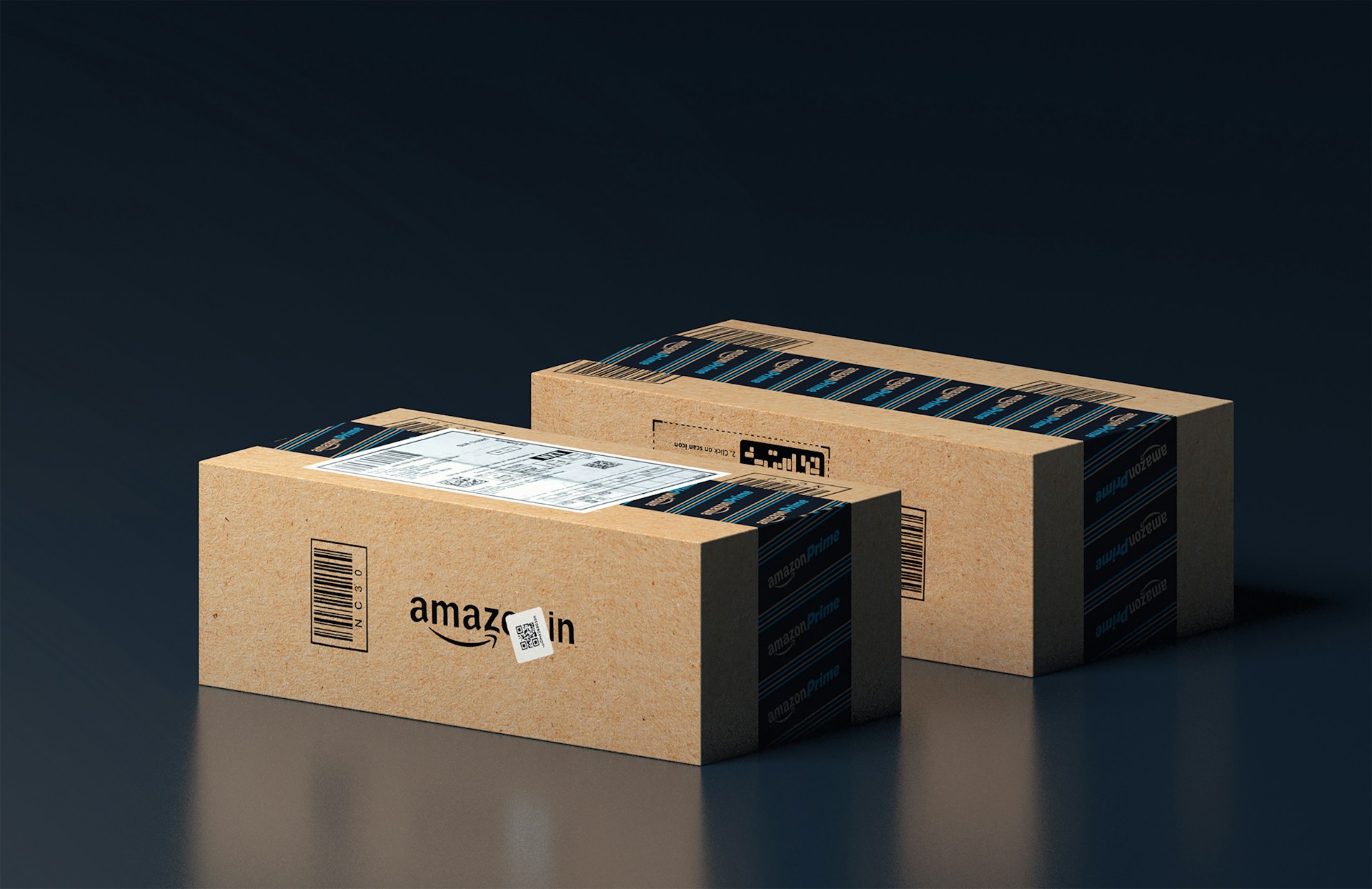Amazon is the world’s largest online marketplace and is a great place to list your products if you want to grow your eCommerce business. Amazon’s customers can find your products within the marketplace through the company’s search engine.
However, Amazon won’t put your listings in front of everyone else’s when your eCommerce store is getting started. Many businesses compete for space on the first page of Amazon’s search results, but you can skip the line and make money with an effective Amazon PPC campaign. This guide will explore how these advertising campaigns work and how they can grow your business.
What is Amazon PPC?
Amazon PPC is a pay-per-click advertising model where you have to pay Amazon each time someone clicks on your ad. You will pay more money as more people click your ads, but it can all be worth it if you convert enough visitors into customers.
How Does Amazon PPC Work?
Amazon has an advanced advertising network that lets you display advertisements promoting your products. You can have your ad displayed for specific keywords related to your industry or alongside top products in the industry.
Advertisers look for a return on ad spend. Small businesses that earn $10 for each sold unit have to keep advertising costs under $10 per unit sold to make a profit. If an advertising campaign is unprofitable, eCommerce business owners have to make some adjustments. They may turn off certain keywords or shut down entire ad campaigns that look broken beyond repair. Cutting off unprofitable advertising campaigns gives business owners more capital to invest in their top-performing ad campaigns.
The Role of Amazon PPC in Today’s eCommerce
Amazon PPC helps eCommerce business owners get in front of their target audience. Instead of building your store’s SEO over several months and years, you can cut to the front of the line with Amazon PPC campaigns. However, this route requires an investment, and you won’t make a return on your investment if your product doesn’t sell well. Amazon PPC isn’t going to help eCommerce business owners with inferior products, but these ads can generate meaningful growth for some online store owners.
Key Elements of Amazon PPC
These are some of the key elements to consider when setting up an Amazon PPC campaign.
Bidding and Budgeting
Amazon lets you set a daily budget for your ads. A higher daily budget gets you in front of more potential customers but is also a bigger investment. You can also decide how much you want to bid for a click.
If you can only afford $0.20 for a click, you can list that as your requirement. Amazon will only display your ad if it wants to make $0.20 on a click. However, Amazon will prioritize eCommerce business owners who set the highest bid for keyword clicks. You can set $0.20 per click as your bid, but if that keyword typically goes for $2 per click, your ad won’t get much traction regardless of how high you set your budget.
Targeting in Amazon Ads
Amazon lets you target based on keywords, similar products, and other parameters. Browsing through these choices and running small-scale Amazon PPC campaigns can help you gauge which ad targeting works for your eCommerce store. Optimal targeting may differ for each product in your eCommerce store.
Product Listings and Keywords
You can run advertisements for every product in your eCommerce store, but that doesn’t always make sense. Focusing on your top-selling products can yield a higher return on your ad spend. Some of the people who buy your best products may proceed to purchase other items in your eCommerce store.
Advertisers can run campaigns that show up for specific product listings and keywords. Having your product show up next to a top-selling product can generate more traction for your store. Using relevant keywords can also drum up more business. While popular keywords will have higher costs per click, you can focus on long-tail keywords to minimize how much you spend. A lower cost per click gives you better margins since you can afford to pay for more clicks before you break even.
How to Grow Your Amazon Business with Amazon PPC
Once you familiarize yourself with the process, Amazon PPC campaigns don’t take long to set up. The challenging part is running profitable PPC campaigns that generate steady sales for your eCommerce store. You will have to launch, modify, and deactivate many ad campaigns before settling on a few that allow you to grow your Amazon Business.
Amazon PPC Campaign Types
These are the primary Amazon PPC campaign types you can use to gain market share in your industry.
Sponsored Products
Sponsored Product campaigns allow you to promote individual products within your eCommerce store. These ads are optimal for products that generate the most sales and have high profit margins.
Sponsored Brands
Sponsored Brand ad campaigns promote your entire eCommerce store instead of an individual product. This strategy can introduce new people to your Amazon Store who become returning customers. Optimizing your Amazon Store and putting your best-selling products front and center can increase your page’s conversion rate.
Sponsored Display
Sponsored Display ads let you showcase your Amazon Store or another e-commerce store that doesn’t sell on Amazon. These ads can appear on Amazon’s homepage, Product detail page, and third-party destinations.
Step-by-Step Guide on Setting up Your Amazon PPC Campaign
Running a profitable Amazon PPC campaign takes a lot of work. These steps can make it easier.
1. Plan Your Amazon PPC Strategy
Know what you want from your Amazon PPC strategy before launching your campaigns and spending money. Focus on your top-performing products first. Early wins make it easier to invest ad dollars into other product listings in the future.
2. Choose Products Amazon PPC Campaign Type
Focus on your best-selling products that have the best profit margins. You can afford to pay for more clicks before the first sale due to a higher breakeven point.
3. Understand Your Target Audience and Shopping Behavior
Analyzing your data can help you draw patterns about what your audience wants. You can see which of your product listings have performed the best and which ones have the lowest conversion rates. eCommerce store owners should also reach out to customers and ask questions about what type of experience and features they want from a product. Understanding your audience better can help you create better product listings and improve your store.
4. Conduct Keyword Research and Optimization
Discovering the top keywords can add more depth to your Amazon PPC campaign and allow it to perform well. You can use Amazon’s search engine and type in a word related to your business. If you do not click “Enter,” Amazon will auto-populate the search bar with various suggestions. Customers are using these suggestions to find products and services.
You can also use a tool like Semrush to find profitable Amazon keywords. Some of these tools have free trials and switch to paid subscriptions. They often have more data about Amazon keywords, such as monthly volume and the average cost per click.
5. Create Your Ad Campaign
Amazon will walk you through the process of creating an ad campaign. eCommerce store owners operate multiple Amazon PPC campaigns simultaneously to gather more data and increase their earnings. However, you should get started with one Amazon ad campaign.
6. Choose Your Targeting
Specify which keywords and products you want to target. Amazon will then display your product listing or eCommerce store for keywords and competing products that you specify.
7. Upload Your Products and Keywords
You have to upload information about your product listing if you have not done so already. You can also either enter keywords manually or upload a spreadsheet that contains all of your keywords.
8. Set Up Your Bids
You can set bids for individual keywords or opt for a universal cost-per-click rate for every keyword. Monitoring the competition can help you set good bids that increase your visibility but don’t cost too much money relative to what other eCommerce store owners are paying.
9. Submit Ad Campaign for Review
When you feel good about your ad campaign, it’s time to submit it to Amazon. The tech giant will quickly decide whether to approve or reject your ad campaign.
10. Monitor and Optimize Amazon PPC Campaigns
The work isn’t over after you launch an ad campaign. You should monitor your Amazon PPC campaigns’ returns, which means looking at product sales and the average cost per click for individual keywords and seeing how visibility changes if you tweak bids for certain keywords. You shouldn’t tinker with an Amazon PPC campaign that is already working well. It’s possible to duplicate profitable campaigns and make modifications to see if you can increase your profit margins.
How to Finance the Cost of Amazon PPC
Amazon PPC campaigns can grow your business, but you need money to get started. While traditional business loans are an option to consider, not every eCommerce store owner has the capital to commit to fixed monthly payments.
Revenue-based financing is a more promising route since the monthly loan payment is equal to a fixed percentage of revenue. This structure results in lower monthly payments if your business has a bad month. It also gives you more flexibility when making payments, and some revenue-based financing providers do not have credit score requirements. You just have to fulfill the lender’s annual gross revenue requirement.
The Bottom Line: Growing Your Amazon Business with Amazon PPC
Amazon PPC campaigns increase visibility and allow businesses to generate more sales. Optimized ad campaigns can become quite profitable and allow eCommerce store owners to expand quickly. Running ad campaigns takes time, and you will have to monitor live campaigns. Each PPC ad gives you additional data. Business owners can interpret that data to make better decisions and launch more profitable Amazon PPC campaigns.







